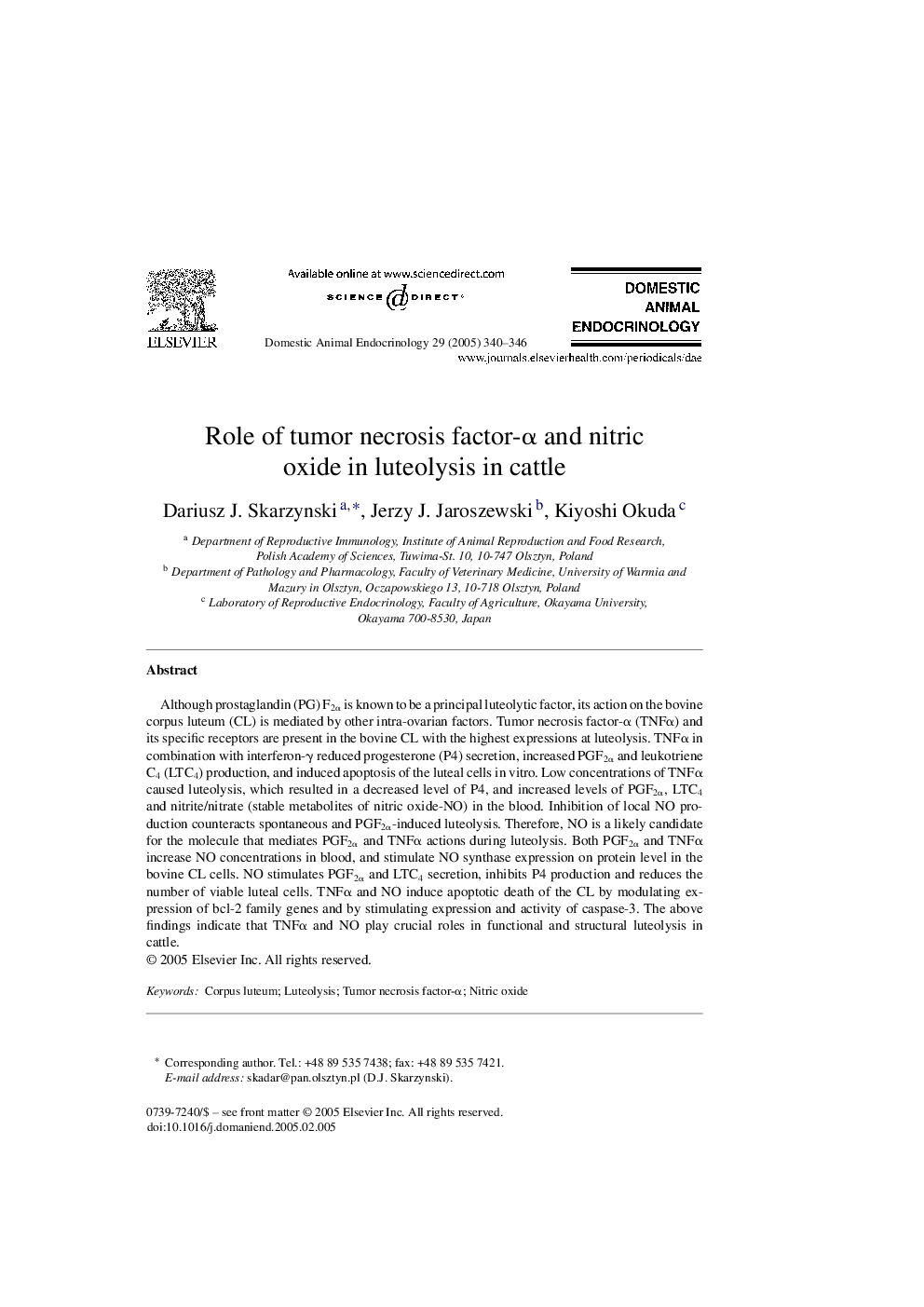| کد مقاله | کد نشریه | سال انتشار | مقاله انگلیسی | نسخه تمام متن |
|---|---|---|---|---|
| 8967173 | 1101394 | 2005 | 7 صفحه PDF | دانلود رایگان |
عنوان انگلیسی مقاله ISI
Role of tumor necrosis factor-α and nitric oxide in luteolysis in cattle
دانلود مقاله + سفارش ترجمه
دانلود مقاله ISI انگلیسی
رایگان برای ایرانیان
کلمات کلیدی
موضوعات مرتبط
علوم زیستی و بیوفناوری
علوم کشاورزی و بیولوژیک
علوم دامی و جانورشناسی
پیش نمایش صفحه اول مقاله

چکیده انگلیسی
Although prostaglandin (PG) F2α is known to be a principal luteolytic factor, its action on the bovine corpus luteum (CL) is mediated by other intra-ovarian factors. Tumor necrosis factor-α (TNFα) and its specific receptors are present in the bovine CL with the highest expressions at luteolysis. TNFα in combination with interferon-γ reduced progesterone (P4) secretion, increased PGF2α and leukotriene C4 (LTC4) production, and induced apoptosis of the luteal cells in vitro. Low concentrations of TNFα caused luteolysis, which resulted in a decreased level of P4, and increased levels of PGF2α, LTC4 and nitrite/nitrate (stable metabolites of nitric oxide-NO) in the blood. Inhibition of local NO production counteracts spontaneous and PGF2α-induced luteolysis. Therefore, NO is a likely candidate for the molecule that mediates PGF2α and TNFα actions during luteolysis. Both PGF2α and TNFα increase NO concentrations in blood, and stimulate NO synthase expression on protein level in the bovine CL cells. NO stimulates PGF2α and LTC4 secretion, inhibits P4 production and reduces the number of viable luteal cells. TNFα and NO induce apoptotic death of the CL by modulating expression of bcl-2 family genes and by stimulating expression and activity of caspase-3. The above findings indicate that TNFα and NO play crucial roles in functional and structural luteolysis in cattle.
ناشر
Database: Elsevier - ScienceDirect (ساینس دایرکت)
Journal: Domestic Animal Endocrinology - Volume 29, Issue 2, August 2005, Pages 340-346
Journal: Domestic Animal Endocrinology - Volume 29, Issue 2, August 2005, Pages 340-346
نویسندگان
Dariusz J. Skarzynski, Jerzy J. Jaroszewski, Kiyoshi Okuda,